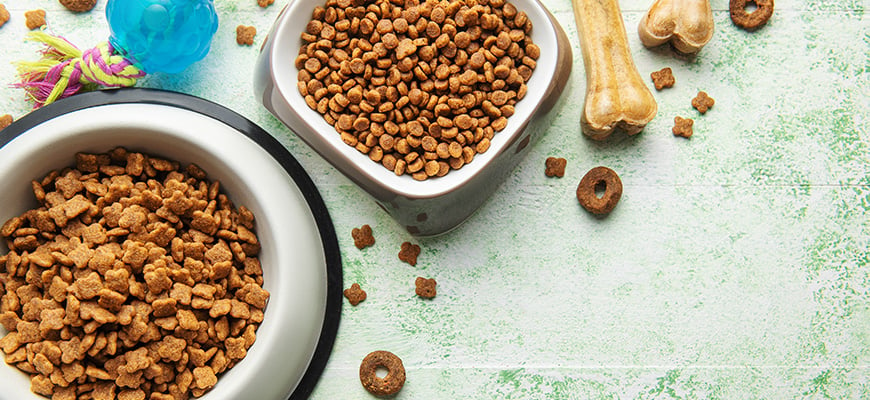
Creating your own Rocket Industrial personal account has many benefits:

Pet food packaging has come a long way over the years, evolving to meet the needs and demands of pet owners. Changes to the way pet owners make dietary choices for their pets has led to many new products on the market and more nutritious foods. While the pet food industry keeps growing and evolving, the packaging industry is adapting and innovating to meet the changing needs of consumers. Here is an overview of some of the latest trends in pet food packaging.
There are several types of pet food available on the market, including dry, wet, semi-moist, fresh, frozen, and raw food. Each type of pet food has unique packaging requirements to ensure that it stays fresh.
Dry Food
Dry pet food, also known as kibble, is the most commonly bought type of pet food. It comes in a variety of formulas, including grain-free and hypoallergenic options. Dry food is typically packaged in resealable bags made of multi-layer materials to protect the food from moisture, air, and insects during storage and transport. The outer layer of the bag is often made of paper or plastic, while the inner layer is made of aluminum, polyester, or polyethylene film.
Wet Food
Wet pet food is another popular type of pet food. It's available in a variety of flavors and formulas and is often used as a treat or supplement to dry food. Wet food is typically packaged in aluminum cans or plastic containers with peel-off lids so it remains fresh and safe for consumption. Some brands also offer wet food in pouches or trays that can be single-serving portions or resealed for multiple feedings.
Semi-Moist Food
Semi-moist pet food is a less common type of pet food that is similar in texture to soft, chewy treats. It's more often used as an occasional treat or a supplement to a pet's regular food diet. Semi-moist food is typically packaged in small resealable plastic or foil bags within a carton to maintain moisture.
Raw, Fresh, and Frozen Food
Fresh and frozen pet food is a specialized type of pet food that is becoming more popular due to subscription services. It's most often packaged in vacuum sealed single serving flat pouches for freshness, easy storage, and portion control. Raw food is made from uncooked meat, bones, and vegetables and is similarily packaged in vacuum-sealed bags or other airtight containers if made at home.






Becoming More Eco-Friendly
Most pet food bags are lined with paper and plastic layers that have been sealed together and are not able to be recycled. This has led many brands to search for ways to make their packaging more sustainable. Manufacturers have started experimenting with compostable and biodegradable films to use in their packaging. Some pet food brands are also partnering with groups like TerraCycle to upcycle food bags or working with organizations to better separate the flexible plastic packaging from paper and other recyclables to eliminate landfill waste.
Adding Customizable Options
Customizable packaging is another current trend in pet food packaging. Pet owners want to be able to personalize their pets' food and make it unique to their needs. Brands are offering customizable options such as personalized labels on subscription dog food or treat packaging that can be decorated with a pet's photo or name.
Smart Packaging Technology
Smart pet food packaging refers to technology to provide additional benefits to pet owners or enhance the product experience. The most popular example is QR codes that pet owners can scan with their smartphones to access additional information about the product, such as nutritional information, feeding recommendations, or product reviews. Other examples are freshness indicators, such as color-changing labels, that alert pet owners when the product has expired or temperature sensors that let the owner know if the food has been exposed to potentially harmful conditions for temperature sensitive food.
Innovative Designs
Pet food packaging is no longer limited to traditional shapes and sizes such as the large flat food bags that used to line the pet food aisles. Brands are experimenting with new designs to make their products stand out on store shelves and be more convienent for customers to handle. From high-impact designs to minimalist styles, the visual design of pet food packaging is becoming more important due a change in pet owners wanting to be more aware of what they are feeding their pet. Adding blurbs about the company, happy dog imagery, unique benefits, or a large focus on the nutritional values is becoming common practice.
We love our pets just as much as you and your customers do. We know how important it is to meet the changing needs and demands of pet owners while standing out online and on store shelves. If you're looking for better product protection, a new bag design, or to reduce packaging materials, we can help! Contact us to talk with a packaging specialist.


